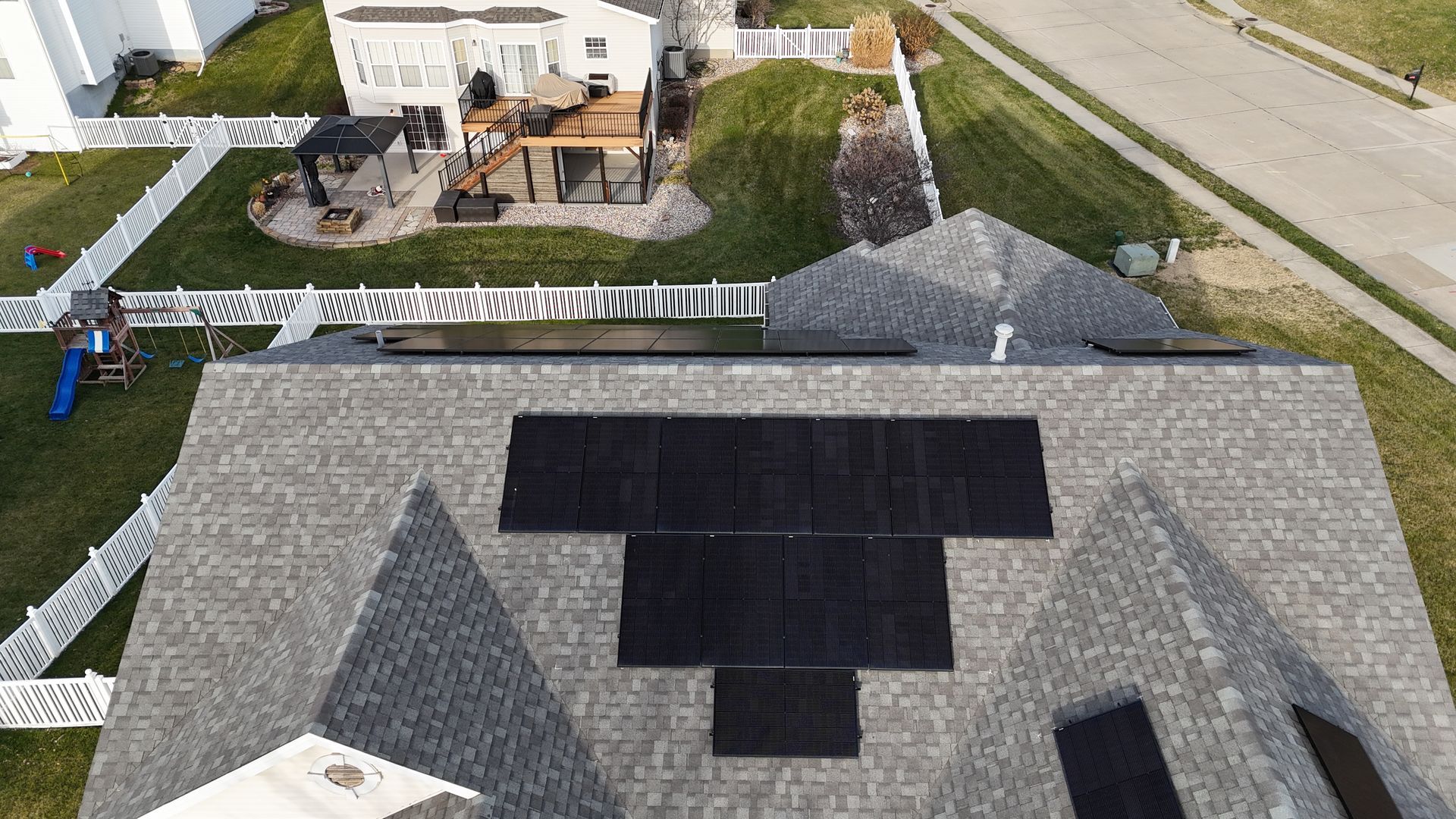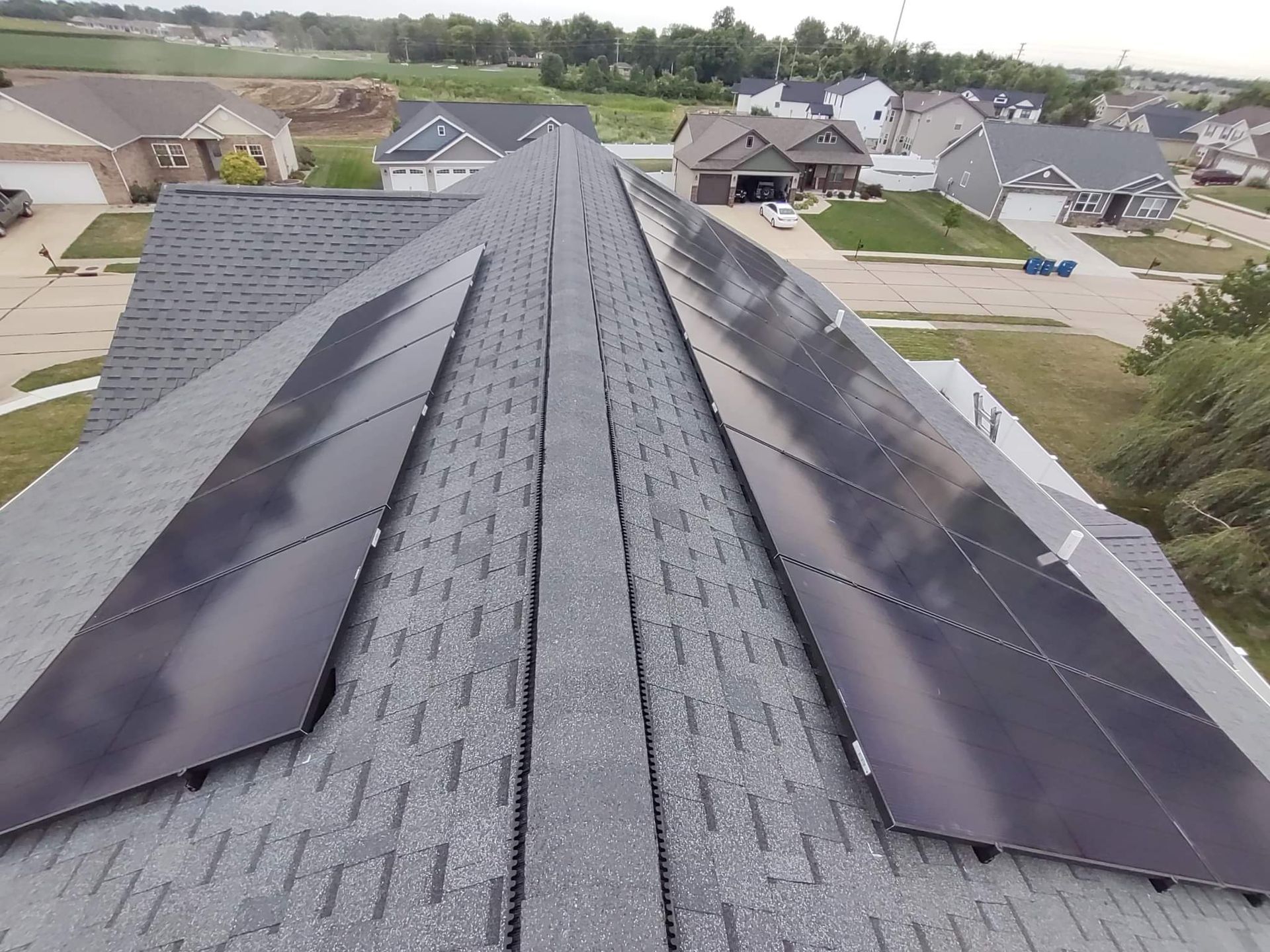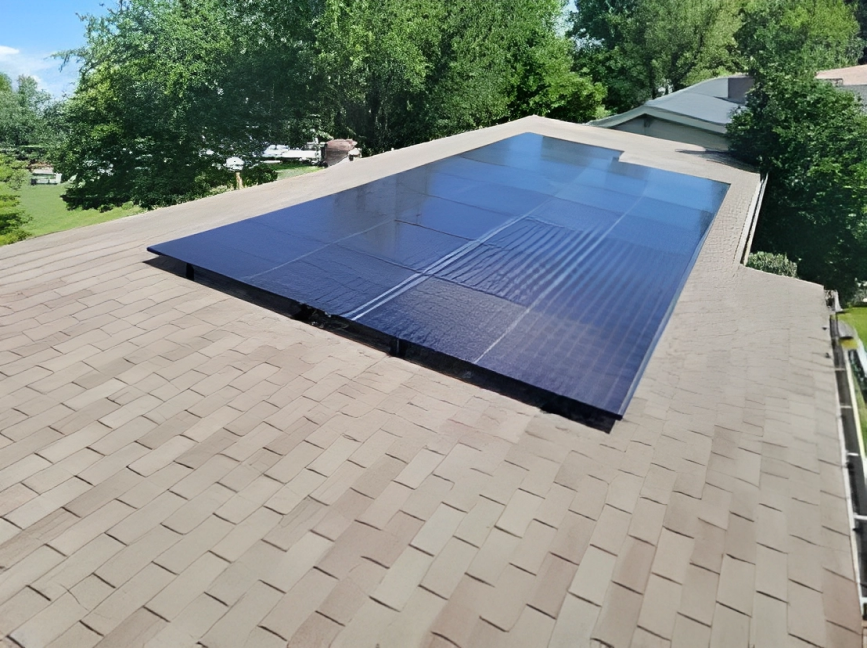Effortless Solar Solutions in Missouri & Illinois
At Sunsent Solar , we consider educating our community our main focus. We're here to help whether you're interested in learning about solar solutions in Missouri or Illinois or considering purchasing solar for your home or business.
How Do Solar Panels Work?
As a homeowner or business owner who is considering the installation of solar panels, you may be wondering how solar solutions works. After all, before you commit to energy ownership, you want to be sure you have a solid understanding of how solar works and how it can serve as a cost-effective option for you and your home or business.
Exploring the Basics
Solar energy is created when sunlight hits an electron in the first layer of a solar panel, which is made up of many small solar cells that are made of two different layers stuck together. When the sunlight hits the electron, it causes the electron to jump to the second layer. This electron then makes another electron move, which causes another to move. This chain reaction ultimately results in a flow of electrons, which translates to electricity. This electricity is then used to power your home or business.
Powering Your Home With Solar Energy Solutions
After the electricity is produced by your solar panels, the current leaves the solar panel and passes through a wire conduit. This wire leads to an inverter, which is capable of inverting the direct current with a fixed voltage into an alternating current. The current then feeds into your home’s circuitry or into an electrical grid, which can then be used to power your appliances and everything else in your home in the same way as the electricity that you receive from your local utility company.
Going Off or Staying on the Grid
Most homeowners choose to stay “on the grid” after installing a solar panel system in Missouri. When you stay on the grid, your home continues to be powered by the electric company. When your home makes solar energy, that energy is fed back to the grid and credited toward your account. In this way, you are guaranteed to have a constant flow of energy even on days that are exceptionally cloudy and during the nighttime. If you choose to go “off the grid,” you will need to have batteries that are capable of storing power to be used during those times when your solar module cannot capture enough energy from the sun to fulfill your needs at the time.
Solar Has Never Been Easier
Going solar can be a simple process with the help of Sunsent’s solutions in Missouri and IllinoisHere are the general steps involved in going solar:
- Assess your energy needs: Determine the amount of electricity you typically use and calculate the size of the solar energy system you need to meet those needs.
- Evaluate your home or business's suitability for solar solutions: We can assess the orientation and shading of your roof or property to determine if it is suitable for solar.
- Receive a quote, can be done online or on-site.
- Schedule the installation: Once you have chosen to go solar, schedule the installation of the solar energy system. The installation process typically takes 1-2 days to complete.
- Enjoy the benefits of solar energy: Once your system is installed and operational, you can start enjoying the benefits of clean, renewable energy and lower electricity bills.


Powering Your Missouri or Illinois Home With Solar Solutions
Powering your home with solar energy can provide a number of benefits, including reduced electricity costs, increased energy independence, and a reduced carbon footprint. Here are the steps to take if you're interested in powering your home with solar energy solutions:
- Assess your energy needs: Determine the amount of electricity you typically use and calculate the size of the solar energy system you need to meet those needs.
- Evaluate your home's suitability for solar: A solar energy professional can assess the orientation and shading of your roof to determine if it is suitable for solar.
- Get quotes from solar energy providers: Contact several solar energy providers and request quotes for the installation of a solar energy system. Be sure to compare the cost, quality, and warranty of the systems being offered.
- Choose a solar energy provider: Once you have received quotes from several providers, choose the provider that best meets your needs and budget.
- Schedule the installation: Once you have chosen a provider, schedule the installation of the solar energy system. The installation process typically takes several days to complete.
- Monitor your energy production: After the installation is complete, monitor your energy production using a monitoring system or app. This will help you track your energy usage and ensure that your system is working as expected.
- Enjoy the benefits of solar energy: Once your system is installed and operational, you can start enjoying the benefits of clean, renewable energy and lower electricity bills.
It's important to note that the specific steps and requirements for powering your home with solar energy may vary depending on your location, so it's a good idea to consult with a local solar energy provider for more specific information.
Electricity Inflation
The inflation rate for electricity has varied over the last 30 years, with some years experiencing higher inflation than others.
In general, the inflation rate for electricity has been trending upward over the last few decades, although the rate of increase has varied depending on a number of factors such as changes in fuel prices, regulations, and infrastructure improvements.
According to the U.S. Energy Information Administration (EIA), the average retail price of electricity for residential customers in the United States has increased from about 8 cents per kilowatt-hour (kWh) in 1990 to about 13 cents per kWh in 2020. This represents an average annual inflation rate of about 2% per year over the last 30 years.
It's worth noting that the inflation rate for electricity can vary significantly depending on the region, with some areas experiencing much higher rates of inflation than others. Additionally, changes in energy policies and regulations at the state and federal level can also have a significant impact on the inflation rate for electricity.
It's important to keep in mind that this information is based on the average inflation rate and that individual experiences may vary. If you're interested in more specific information, it may be helpful to consult the EIA or a financial professional for further analysis.


How Does Solar Energy Power Your Home
Solar energy works by harnessing the energy from the sun and converting it into usable electricity for homes and businesses. Here's a brief overview of how it works:
- Solar panels: Solar panels, also known as photovoltaic (PV) panels, are installed on rooftops or in other sunny locations. The panels are made of silicon and other materials that convert sunlight into direct current (DC) electricity.
- Inverter: The direct current electricity produced by the solar panels is then passed through an inverter, which converts it into alternating current (AC) electricity. This is the type of electricity that is used in homes and businesses.
- Electrical panel: The converted AC electricity is then sent to the electrical panel, where it can be used to power lights, appliances, and other electrical devices in the home or business.
- Grid connection: In most cases, solar energy systems are connected to the electrical grid. This means that when the solar panels produce more electricity than the home or business is using, the excess electricity is sent back to the grid, and the homeowner or business owner is credited for the excess energy. When the solar panels are not producing enough electricity to meet the needs of the home or business, the system will draw electricity from the grid.
- Battery storage: Some solar energy systems also include battery storage, which allows excess electricity to be stored for later use. This can provide backup power during outages or blackouts and can also increase energy independence.
Overall, solar energy systems are designed to provide a clean, renewable source of electricity that can help reduce energy costs, lower greenhouse gas emissions, and increase energy independence.
What Are Solar Panels Made Out of?
Solar panels are made up of photovoltaic (PV) cells, which convert sunlight into direct current (DC) electricity. The PV cells are typically made from silicon, a material that is abundant, non-toxic, and easy to work with.
There are two main types of silicon used in PV cells: monocrystalline silicon and polycrystalline silicon. Monocrystalline silicon is made from a single, high-purity silicon crystal, while polycrystalline silicon is made from multiple, lower-purity silicon crystals.
In addition to silicon, solar panels also contain other materials such as metal contacts, anti-reflective coatings, and protective coverings. The metal contacts are used to transfer the electricity generated by the PV cells to the inverter, while the anti-reflective coatings help to reduce reflection and improve energy efficiency. The protective coverings are used to protect the PV cells from damage and to increase the durability and lifespan of the solar panel.
Overall, the materials used in solar panels are carefully selected to provide maximum efficiency and performance while also being safe, sustainable, and cost-effective.


How to Choose a Solar Company
When choosing a solar company, it's important to consider several key factors to ensure that you get a high-quality solar energy system that meets your needs and budget. Here are some key things to look for:
- Experience and expertise: Look for a solar company with a proven track record of delivering high-quality solar energy systems. Make sure that the company has experience installing solar energy systems in your area and that its technicians are certified and trained to work with the latest technology.
- Quality of equipment: Make sure that the solar panels, inverters, and other equipment used by the company are from reputable manufacturers and are of high quality. Look for equipment with a good warranty, as this will give you added protection in case of any defects or issues.
- Customer reviews: Read customer reviews and testimonials to get an idea of the company's reputation and customer service. This can help you to determine if the company is trustworthy and if its customers are satisfied with its work.
- Cost and financing options: Get quotes from several solar companies and compare the cost and financing options offered. Look for a company that offers competitive pricing, flexible financing options, and a clear understanding of the costs involved.
- Maintenance and support: Make sure that the company offers ongoing maintenance and support for your solar energy system, including regular cleaning and inspection, troubleshooting and repair, and warranty coverage.
- Installation process: Ask about the company's installation process and make sure that you understand the timeline, logistics, and any potential disruptions. Make sure that the company is transparent about its installation process and that you are comfortable with the steps involved.
By considering these factors and doing your due diligence, you can choose a solar company that will provide you with a high-quality solar energy system that meets your needs and budget.
Quick Links
Contact Us
Greater St. Louis
Central Illinois
Southern Illinois
Southern Indiana
Newsletter
Contact Us
Thank you for subscribing to our newsletter! Stay tuned for the latest updates, insights, and tips on how you can make the most of your solar journey.
Please try again later.
Location Map
© Copyright 2023 | All Rights Reserved | Sunsent Solar
